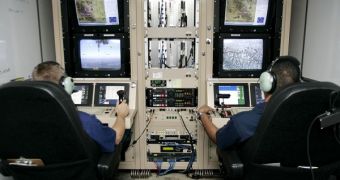The future of aviation looks bright, aircraft constructors say, in the light of the fact that, next year, a new 1.5 ton aircraft, powered entirely by the sun, will complete a first-of-its-kind test flight. The plane is being built in order to prove that using solar energy to power up airplanes is a sustainable process. To further prove this, the new aircraft will attempt a trip around the world by 2011. If the try succeeds, then most likely the patent will be commercially available shortly after.
The new airplane, named Solar Impulse, will have a wingspan of approximately 61 meters and will be covered in some 12,000 photovoltaic cells, carefully designed and spread on its wings. Its constructors hope that the $100 million project will provide, upon completion, a solar-powered prototype, capable of reaching heights of approximately 8,500 meters (roughly 27,900 feet).
A major problem faced by the international team of scientists working on the program was night flight. Seeing how solar vehicles are regularly dependent on the Sun to function, driving a solar car, or flying a solar plane, at night can be very difficult. But the 50 engineers working on the project seem to have overcome this difficulty, by building in a deep-cycle battery tank, weighing about 400 kilograms (some 880 pounds), which accounts for about a quarter of the total weight of the plane.
The construction of the aircraft itself will be a genuine work of art, with the upper part of its wings formed entirely by solar cells, while the underlying part will be covered in film. The UAV will have a total of 8 pods, each of them equipped with a 10-horse power engine. Electronics will limit the speed of the rotor blades to a number between 200 and 400 revolutions/minute.
Thermal insulation on its exterior will allow Solar Impulse to operate at temperatures of -40°C. At very high altitudes, the low temperature can cause engine failure to even the biggest planes out there today. But insulation will keep warmth inside the new aircraft, offering it larger autonomy and range.

 14 DAY TRIAL //
14 DAY TRIAL //